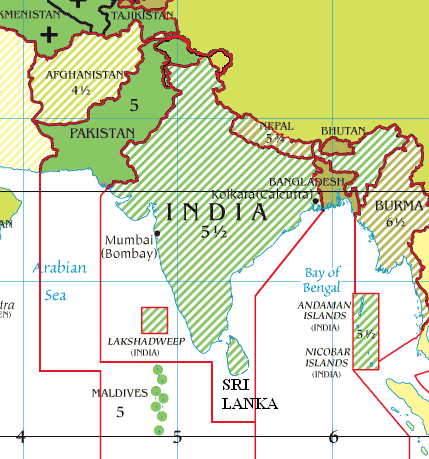
Sri Lanka Standard Time
Sri Lankan Standard Time (SLST) (Sinhala: ශ්රී ලංකාවේ සම්මත වේලාව, romanized: Shri Lankavay Sammatha Velava, Tamil: இலங்கை நியம நேரம், romanized: Ilaṅkai niyama nēram) is the time zone for Sri Lanka. It is 5 hours and 30 minutes ahead of GMT/UTC (UTC+05:30) as observed since 15 April 2006.[1]
Sri Lankan Standard Time
Sri Lanka does not currently observe daylight saving time.
On 15 April 2006, Sri Lanka Time reverted to match Indian Standard Time calculated from the Allahabad Observatory in India 82.5° longitude East of Greenwich, the reference point for GMT. This time zone applies to the entirety of Sri Lanka.
Since 1880, the time zone in Sri Lanka (or formerly, Ceylon) has varied from UTC+05:30 to UTC+06:30.
Sri Lanka briefly observed daylight saving time during World War II.